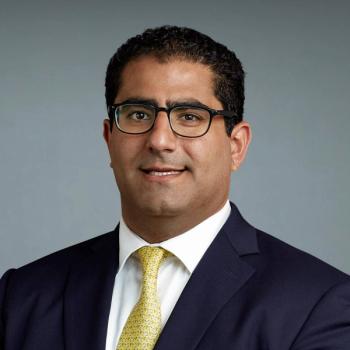
- Lung Cancer Special Issue
- Volume 1
- Issue 1
Lives in the Balance
Lung cancer poses the greatest threat to survival when it's diagnosed in its later stages.
Lung cancer poses the greatest threat to survival when it’s diagnosed in its later stages — and, unfortunately, that’s exactly when it’s typically found. But today, we have the opportunity to start turning the dial the other direction, toward earlier diagnosis and more lives saved. This is made possible by the recent move toward screening those at high risk for lung cancer with low-dose computed tomography (CT).
In the past, those suspected of having lung cancer were imaged via X-ray, and not as part of an organized nationwide screening program. The recent results of the National Lung Screening Trial demonstrated that screening a high-risk population via low-dose CT is an effective way to find early lung cancers, and that this strategy uncovers more of these cancers than X-ray can. The study found that CT screening, compared with X-ray, can prevent an extra three lung cancer deaths for every 1,000 people screened — a 20 percent improvement.
Based on those results, CT screening has been recommended by the U.S. Preventive Services Task Force for people aged 55 to 80 years who have a 30 pack-year smoking history and still smoke, or who have quit in the last 15 years.
Yet screening for cancer can be controversial, and its application in the search for lung cancer is no exception. Although most of the lesions found through screening with low-dose CT — or with X-ray, for that matter — turn out not to be cancer, these false positives can lead to a lot of worry by patients, and to further diagnostic testing, sometimes as invasive as surgery; these tests can, in turn, spark complications.
So why comply with these screening guidelines? Our article on screening for and diagnosing lung cancer shares the views of experts who have considered the balance between the costs and benefits of CT screening in this population.
Elsewhere in this
We hope these articles will leave you more informed about lung cancer, from its causes to its diagnosis and treatment options. If, after reading this
As always, thank you for reading.
Mike Hennessy, Sr.Chairman and CEO
Articles in this issue
almost 10 years ago
Treating Lung Cancer With Precisionalmost 10 years ago
Under the Radar: Detecting Lung Cancer Among Never-Smokersalmost 10 years ago
Containing a Threat: Screening Creates Opportunity to Cure Lung Canceralmost 10 years ago
Hitting a Target in Advanced Non-Small Cell Lung Canceralmost 10 years ago
Wrestling Match: Dealing With Treatment Decisions for Stage 3 Lung Cancer




